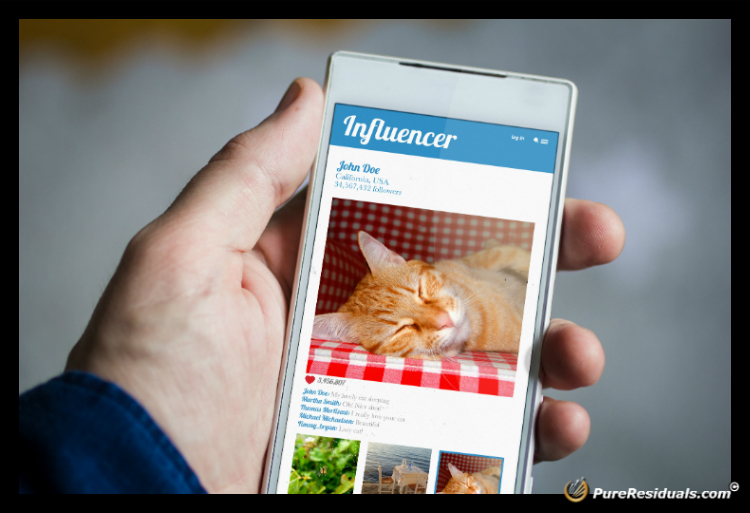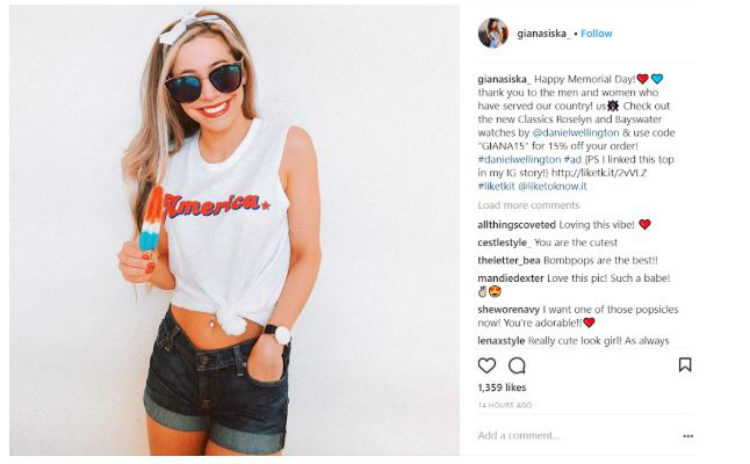Marketing your content via social media can be quite tricky. Just ask any advertising team that has ever been asked to create an ad that would “go viral.” Sometimes the strangest things catch on, while slick campaigns produced by top talent fail spectacularly.
However, the good news is that you don’t need to do it alone. Social media influencers are a digital marketer’s secret weapon. These internet personalities may command a veritable army of loyal and engaged followers, sometimes several million strong.
As many as 49% of people have said they rely primarily on social media influencers when it comes to product recommendations. According to another study, companies earned an average of $6.50 in media value for every dollar spent on influencers.
So you can almost certainly see the benefits of using influencer marketing to complement your existing marketing activities. In this post, we’ll take a look at how you can promote your content with the help of bloggers and influencers.
1. Have a Strategy
If you’re going to get into influencer marketing to promote your content, you need to commit to it. This is no time to “wing it.” Especially considering how much you stand to gain if the campaign pays off. So set clear goals for your campaign and work towards them.
Make sure that these goals are both realistic and easily measurable. Undoubtedly, the ultimate goal will be an increase in sales and a rise in your conversion rates.
However, there are other metrics beyond the bottom line that are definitely worth tracking closely. These could be an increase of traffic to your website or a boost to the number of followers you have across your social media accounts.
The factors of this strategy will range from what to post, to both how often and when your influencers should post their sponsored content. While most companies do cover these, far too many forget to lock down a uniform approach for some aspects of their campaign such as hashtag use, social mentions, geo-tagging posts, etc.
Most brands tend to use very few hashtags in their posts. This may seem like a good way to keep a campaign focused, and many do consider the sparing use of hashtags as the right approach. However, a 2018 study found that posts with around 11 hashtags tended to receive the most engagement from users.
Good promotion is always about the efficiency you get out of every dollar you put into a campaign. And you’re much more likely to get more bang for your buck with a well-formulated strategy than by taking a scattershot approach or giving your influencers too little guidance on how you want to run your campaigns with them.
2. Pick the Right Platforms
The next step is to decide which platforms you will be focusing on. This depends largely on what kind of content you wish to promote and what your primary audience demographics look like.
For example, if you want people to see a documentary you’ve created, you probably want to focus on YouTube, Facebook, and Vimeo, in that order. A new video game will be better promoted with a combination of Twitch and YouTube. Alternatively, if you’re promoting something aimed at a younger demographic, you’ll want to focus more on platforms such as Snapchat and Instagram.
It’s worth mentioning that it’s best to stick to the platform that best showcases your content. Even if it isn’t necessarily the one favored by your key demographics. You can still use secondary promotional efforts on other platforms to drive traffic towards your primary platform so that you can potentially get the best of both worlds.
Some products are difficult to market effectively on some platforms. And this is even more prevalent when the product you are marketing is content. For example, the royalty-free stock video service “VideoBlocks” focused their influencer marketing on YouTube.
Image Source: YouTube
This is due to the fact that the product is easier to demonstrate via videos. But also because the primary customer base for such a service are online video creators themselves. And the vast majority of them are most often active on YouTube.
3. Find the Right Influencers
Now that you’ve decided on which platforms your outreach campaigns are going to focus on, it’s time to decide on which influencers and bloggers you’re going to approach. Social media influencers come in many forms. With some exceptions, the vast majority tend to focus most of their time covering a fairly narrow range of interests.
This is actually very helpful. By focusing only on influencers whose audiences are most likely to be interested in your content, you can quickly build up a lean and efficient influencer marketing campaign.
The best approach here is usually determined by the size of your company and how long you have been advertising. At the start, it is usually more valuable to work with smaller influencers with highly engaged audiences.
As you grow and reach saturation with those smaller audiences, it then becomes more valuable to seek out the larger audience groups. Even if their engagement levels are not ideal.
As an example, watchmaker Daniel Wellington has seen a great deal of success from their social campaigns that focused on partnering with several micro-influencers.
Image via Instagram
This stage of the process is usually the most time consuming, and also often an area where many marketers make mistakes. Not necessarily because they make bad decisions, but because their decisions are based on incomplete data. For that reason, it may be worth engaging the help of influencer marketing tools.
Platforms like Grin, for example, can help you find influencers who have the best exposure with the audiences you are trying to reach. They can even break down each influencer’s audience size and reach by platform.
In the long run, services like these can save significant amounts of time and money; which will allow you to focus your resources more efficiently and ensure the best possible ROI for your campaign.
4. Reach out and Build Relationships
Most influencers make it fairly easy to contact them. So once you have identified the influencers you want to approach for your campaign, getting in touch is simple.
Some influencers are upfront about their promotional activities and will be able to readily provide their rates for various kinds of promotional posts or videos. Others, particularly smaller ones, will be more open to negotiation. And you may be able to get a better deal with them if their audience is highly engaged.
5. “Right-Size” Your Campaign
Endorsements from the most prominent influencers can get expensive pretty fast. Depending on the platform, paid influencer promotions can run anywhere from a couple of hundred dollars to several hundred thousand per brand integration.
We’ll be focusing on paid influencer campaigns in this post. But it is worth saying that with careful planning and a little luck, you may be able to get the coverage you’re looking for without needing to spend a large amount on your campaign.
As we mentioned earlier, approaching micro-influencers may be able to get you the reach and exposure you want, without needing to allocate a large budget for your campaign.
The key here is to create a natural value proposition for the social media influencers that you would like to share or cover your content. You can do this by either tailoring some of your content to directly appeal to a particular group of influencers or by building relationships with those influencers whose interests directly overlap with the content you create.
Influencers with fewer than 100,000 followers command lower rates for promotional work but can still be the most cost-effective if they have a high engagement rate with their audience. As a bonus, these micro-influencers are usually more receptive to negotiations that would provide a more favorable deal to your business.
By working out a deal that compensates your influencers fairly and also fulfills your previously determined goals for this campaign. Then both parties can look forward to a long and fruitful partnership.
6. Communicate Your Needs Clearly
If you are engaging in a paid promotional campaign, then it is best to leave as little to chance as possible. If you want some features of your content to be highlighted, or certain aspects to be focused on, you need to make that as clear as possible to the influencers you are approaching.
And if you and your influencers are operating in the United States, it is important that any paid promotions you engage in are summarily disclosed to your target audience. If you’re not sure what sort of coverage counts as an endorsement or what qualifies as “clear and prominent disclosure,” you can check the FTC website.
7. Monitor and Follow up
Not all social media influencers are equal. And over time, you may need to make adjustments to your campaigns.
If some influencers are delivering better results, you should definitely look into expanding your relationships with them. Others, however, may not be having much success, or may not be presenting your content or your brand in the manner agreed. In these cases, it is important to contact those influencers to correct the issue.
Building and maintaining relationships with your best influencers is also important. This can be achieved in a variety of ways. From personalized thankyou notes or gift bags at the end of a campaign to invites to major events that you know they will be interested in attending.
For smaller influencers, you can show the support of your brand on social media with likes, retweets, or by sharing their content or projects. Sharing their content with your own online audience can help them grow their presence. Which creates a positive feedback loop with the influencers that you choose to partner with.
Conclusion
Investing in social media influencer campaigns allow you to quickly take advantage of established brands with significant reach in a space where you may not have significant recognition. Manually identifying the right influencers and striking a mutually beneficial deal is likely to remain a time-intensive process.
However, by using the right support tools and building your network, you can significantly cut the groundwork needed for future campaigns. And there’s more than enough evidence to prove that effective long-term social media influencer deals pay for themselves several times over.
Can you think of any more tips or any more strategies to get content promoted by bloggers and influencers? Let us know in the comments below.
About the Author












Great article. Awesome I like it .